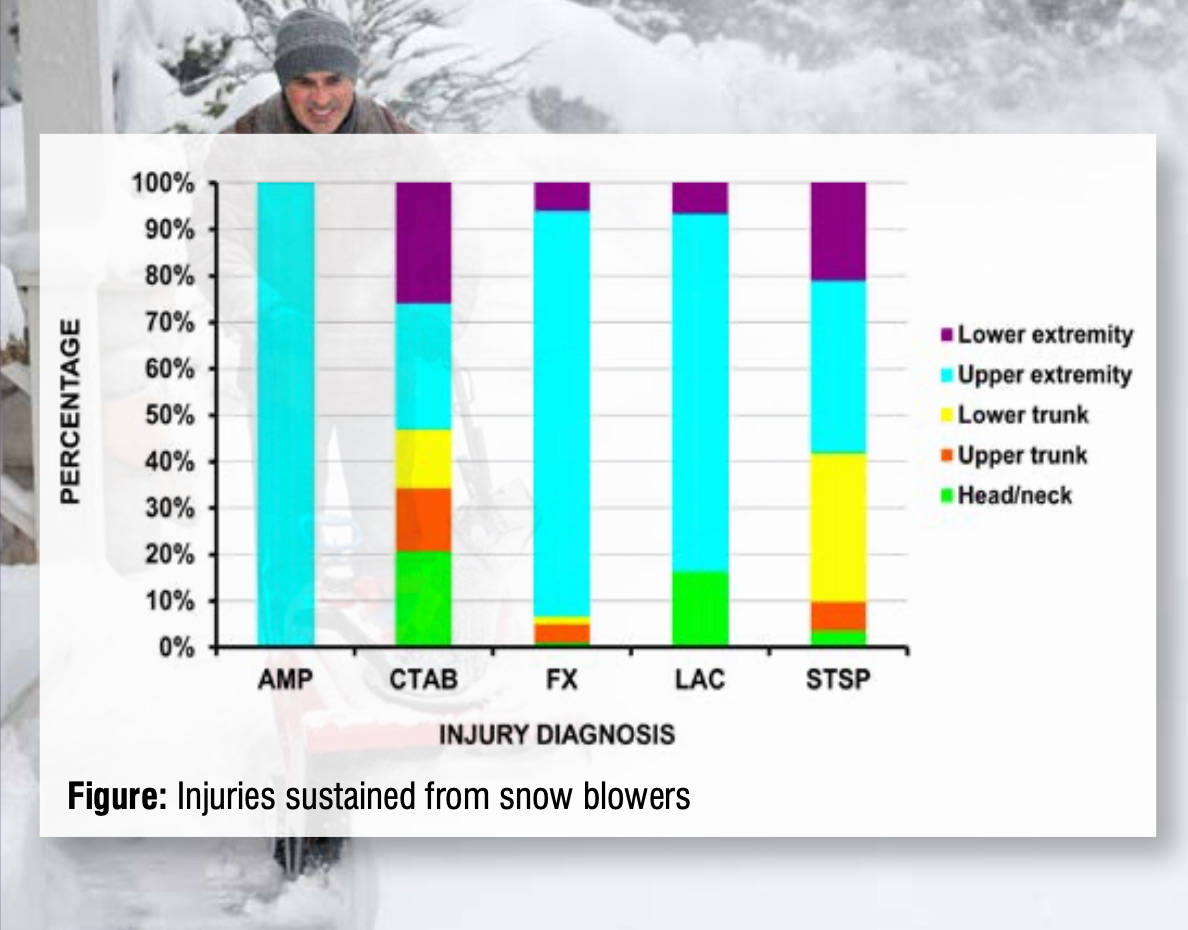 Power snow blowers allow for easier, quicker snow removal at homes and businesses. However, they are potentially dangerous and can result in significant injury. Most studies of snowblower injuries discuss those sustained when placing the hand into the chute, resulting in lacerations, fractures, and, frequently, amputations. However, other injuries can also occur such as being hit by a missile ejected from the chute, slipping/falling while using the snow blower, and medical issues such as shortness of breath and cardiac events (myocardial infarction/cardiac arrest).
Power snow blowers allow for easier, quicker snow removal at homes and businesses. However, they are potentially dangerous and can result in significant injury. Most studies of snowblower injuries discuss those sustained when placing the hand into the chute, resulting in lacerations, fractures, and, frequently, amputations. However, other injuries can also occur such as being hit by a missile ejected from the chute, slipping/falling while using the snow blower, and medical issues such as shortness of breath and cardiac events (myocardial infarction/cardiac arrest).
There is very little literature reviewing the whole scope of injury associated with snow blowers. It was the purpose of this study to analyze all types of injuries and medical events associated with snowblower use presenting to emergency departments (EDs) in the United States.
Data on National Electronic Injury Surveillance System ED visits due to snow blowers from 2003 through 2018 were analyzed by age, sex, diagnosis, anatomic location of the injury, and year, month, or weekday. The mechanism of injury and alcohol use were noted. Statistical analyses were performed, accounting for the weighted, stratified nature of the data.
There were an estimated 91,451 patients with an average age of 51 years; 91.2% were male. Amputation, fracture, or laceration accounted for 43,524 (47.6%) of the ED visits. The mechanism of injury was placing the hand into the chute (44.5%), a fall/slip (13.3%), medical events (6.1%), and miscellaneous (33.8%). Most (68.9%) occurred at home. Alcohol was rarely involved (0.4%). There were 648 deaths; 647 were due to cardiac events. The five major injury diagnoses were fracture (25.9%), laceration (20.2%), strain/sprain (15.0%), amputation (11.2%), and contusion/abrasion (10.2%); 99.8% of the amputations involved fingers (Figure). The incidence of ED snowblower visits was 1.845 per 100,000 US population with no change over time. There was a general correlation between the number of visits and the annual snow cover.
Ample opportunity for injury prevention exists, as there was no change in the incidence over time. Cardiac events accounted for essentially all of the deaths.
Source: Loder RT, Solanki D. Events due to snowblower use seen in US Emergency Departments from 2003 through 2018. Cureus. 2020;12(12): e11836.








